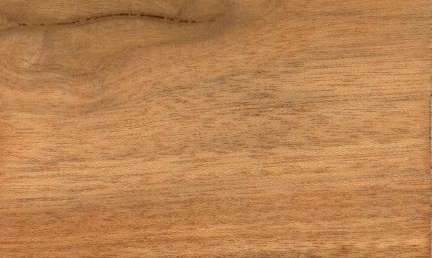
Light red meranti (Shorea contorta)
Family: Dipterocarpaceae
Common names: Almon, Lauan, Light red lauan, Light red meranti, Light red seraya, Mayapis, Meranti bunga, Perawan, White lauan
Distributed in: Philippines, Thailand (Oceania and S.E. Asia)
Distribution overview: The Light red meranti group of Shorea genus are found in the Malay Peninsula, Indonesia, the Philippines, as well as Sabah and Sarawak. They prefer well-drained soils and usually grow at low altitudes.
Common uses: Beams, Bedroom suites, Building construction, Cabin construction, Cabinetmaking, Chairs, Chests, Concealed parts (Furniture), Concrete formwork, Construction, Decks, Decorative plywood, Desks, Dining-room furniture, Domestic flooring, Dowell pins, Dowells, Drawer sides, Excelsior, Factory construction, Fine furniture, Floor lamps, Flooring, Form work, Foundation posts, Framing, Furniture , Furniture components, Furniture squares or stock, Hatracks, Heavy construction, Joinery, Joists, Kitchen cabinets, Light construction, Living-room suites, Office furniture, Parquet flooring, Plywood, Porch columns, Radio - stereo - TV cabinets
Product sources: Shorea is a major source of lumber and veneers on the international market. The trees are abundant, and supplies are universally available, especially in the form of veneers. This popular wood is priced in the inexpensive range.Many species in the Shorea genus are also a source of other economically important non-timber products. Seeds of some species yield fat which is used in the manufacture of chocolate. Others produce nuts, the most common of which is the illipe nuts of commerce produced by S. gysbertisiana . The nuts yield a fat which is similar to cocoa-butter in some of its properties. Shorea trees are also tapped for oleo-resin, and typical dammar is obtained from S. wiesneri which grows in Java and Sumatra. The tree of S. robusta produces dammar which is used as a disinfectant and as incense in religious ceremonies in India. Other non-timber products from Shorea are reported to include tannin and fibers.
Environment profile: Little or no threat to its population
Tree size: Trunk diameter is 200-250 cm
Colors: the heart isRed, Whiteand the sapwoodWhite, Yellow.The grain isInterlocked, the textureMediumand the lusterSlightly lustrous
Natural durability: Susceptible to attack by powder-post beetle , Varied natural resistance of heartwood to decay (poor to moderate)
Odor: No distinct odor or taste
Kiln Schedules: T6-D4 (4/4)
Kiln Drying Rate: Naturally dries slowly
Drying Defects: Stock in thinner dimensions may warp during drying , Thick material dries slowly and tends to surface check
Ease of Drying: Slowly
Blunting Effect: Slight blunting effect on cutting tools
Boring: Fairly easy to very easy
Carving: Respond very well to carving operations
Cutting Resistance: May be some break away at the base and back cut when sawing lighter stock
Gluing: Takes glue well
Mortising: good
Moulding: Responds very well to most machine tools
Movement in Service: Responds very well to most machine tools
Nailing: Satisfactory nailing qualities , Very Good to Excellent
Planing: Planing with satisfactory tools is satisfactory if they are kept very sharp
Resistance to Impregnation: Resistant to very resistant to preservative treatment
Response to hand tools: Yields a smooth, clean finish
Routing recessing: Routs easily with ordinary machine tools
Sanding: Lighter stock may produce rough surfaces in sanding
Veneering qualities: Veneers easily, Veneers moderately easy
Steam bending: Wood buckles severely
Screwing: Fairly Easy to Very Easy, Takes screws satisfactorily ; Turning: Turned surfaces of lighter stock may be somewhat rough
Polishing: Very Good to Excellent; Staining: Very Good to Excellent;
- Numerical data Metric
- Numerical data English
- Strength properties
- References
 |
 |
 |
 |
| Item |
Green |
Dry |
Metric |
| Specific Gravity |
0,33 |
0,45 |
|
| Density |
|
496 |
kg/m3 |
| Bending Strength |
511 |
733 |
kg/cm2 |
| Crushing Strength |
275 |
420 |
kg/cm2 |
| Hardness |
|
239 |
kg |
| Impact Strength |
43 |
63 |
cm |
| Shearing Strength |
|
66 |
kg/cm2 |
| Stiffness |
86 |
101 |
1000 kg/cm2 |
| Tangential Shrinkage |
8 |
|
% |
| Radial Shrinkage |
5 |
|
% |
| Weight |
496 |
400 |
kg/m3 |
| Maximum Load |
|
|
cm-kg/cm3 |
| Toughness |
|
244 |
cm-kg |
| Static Bending |
|
|
kg/cm2 |
|
 |  |  |  | | Item | Green | Dry | English | | Bending Strength | 7278 | 10439 | psi | | Density | | 31 | lbs/ft3 | | Hardness | | 528 | lbs | | Impact Strength | 17 | 25 | inches | | Maximum Crushing Strength | 3912 | 5978 | psi | | Shearing Strength | | 951 | psi | | Stiffness | 1227 | 1439 | 1000 psi | | Toughness | | 212 | inch-lbs | | Specific Gravity | 0.33 | 0.45 | | | Weight | 31 | 25. | lbs/ft3 | | Radial Shrinkage | 5 | | % | | Tangential Shrinkage | 8 | | % | | Volumetric Shrinkage | 14 | | % | |
Weight=Medium
Not hard
Dents and marrs easily
Density=High
Compression strength (parallel to grain) = medium
Bending stength in air-dried condition...is medium
Andy Poynter. 1993. Personal Communication.Arno, J. 1988. Shorea spp. - Lauan. In A Guide to Useful Woods of the World. Flynn Jr., J.H., Editor. King Philip Publishing Co., Portland, Maine. 1994. Page 329-330.Chudnoff, M.,1984,Tropical Timbers of the World,U.S.A. Department of Agriculture, Forest Service, Forest Products,Laboratory, Madison.Kaiser, J.Wood of the Month.Wood & Wood Products, July 1986 to September 1993.Lavers, G.M. 1966. The Strength Properties of Timbers. Forest Products Research Bulletin, No. 50. Ministry of Technology, Her Majesty's Stationery Office, London.Lincoln, W.A. 1986. World Woods in Color. Linden Publishing Co. Inc., Fresno, California.WCMC. 1992. Conservation Status Listing - Trees and Timbers of the World. World Conservation Monitoring Center-Plants Programme, Cambridge, CB3 ODL, United Kingdom.
|








